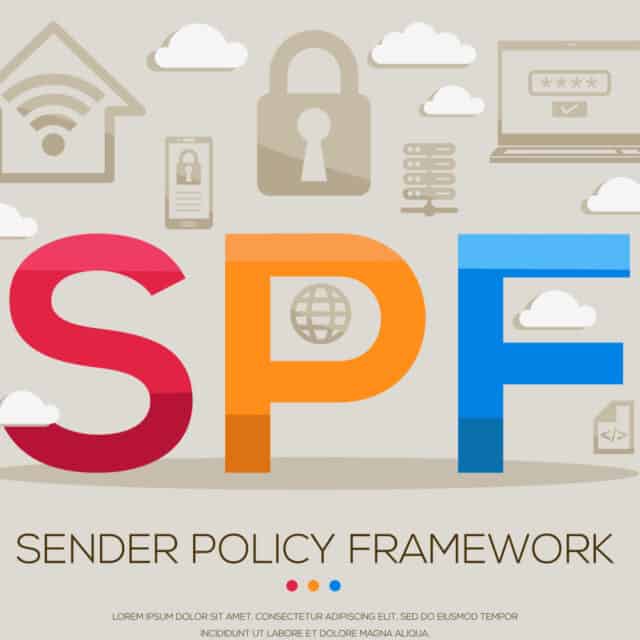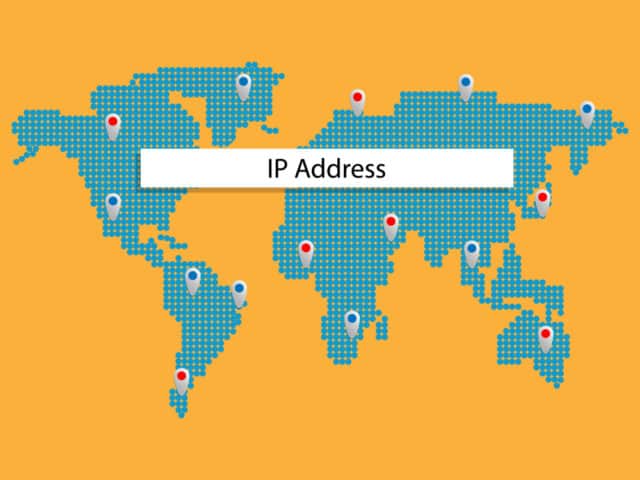How important is email deliverability & sender reputation for every firm?
The issue of email deliverability is genuine. It’s not only about avoiding spam filters. It’s also about delivering your emails into the inboxes of individuals who want to receive them. That implies you must be able to demonstrate that you are sending communications from an address with a strong track record of delivering mail. So, how can we know if our sender reputation is sufficient to send emails?
The answer is straightforward: we don’t.
There are, nevertheless, a few things you may do to improve your sender’s reputation. This blog will define what sender reputation is, explain why it is important, and how it influences email delivery.
What is the definition of email deliverability?

Email deliverability refers to the ability of your emails to reach the recipient’s mailbox. If you send emails to numerous people, you must ensure that all the emails are delivered to the intended recipients.
Check your spam folder to discover how many of your emails have ended up there. Emails could end up in this folder for a variety of reasons.
If you’re sending out promotional emails, for instance, you don’t want them to end up in the spam inbox because it will harm your reputation.
How can you enhance the deliverability of your emails?

What methods do you use to ensure that your emails are sent to the correct recipients? There are a number of ways to ensure that your communications are delivered to the right people. Some of them are self-evident, such as double-checking your email address.
Others, such as ensuring your IP addresses are correct, are less obvious. Even if you’re doing everything right, there are a few measures you can take to improve the deliverability of your emails.
These pointers can assist you in avoiding typical blunders that may cause your emails to bounce or be filtered away.
How does a sender score work?
The Sender Score is a statistic that indicates how good your email program is. It assesses the email program’s health as well as the sender’s reputation. Several variables influence your sender score. Spam complaints, sending emails to unknown recipients, and whether you’re on any industry blacklists, among other things, are all things to consider.
Create a framework for sender policies.

Because SPF helps the recipient to verify if the communication came from a reliable source, it boosts your credibility. The recipient can determine whether the transmitting host is authorised to send mail through the specified SMTP servers by looking at the SPF record. The recipient can establish that the message is genuine by authenticating the sending host.
Examine your sender’s reputation.

When senders transmit messages with an average delivery rate of less than 90%, they are rejected. You must ensure that your emails reach your customers’ inboxes when you send them out.
Subscribers will lose confidence in your organization if you do not send enough emails. You may believe you are sending many emails, but if they are not delivered, you are squandering money.
Examine feedback loops.

Most major ISP providers provide complaint feedback loops through which senders can gather information from someone who has complained about their emails.
Complainant Feedback Loops, or CBLs, are what they’re called. Users of Yahoo, Google, and Outlook can establish a feedback header that does not use the standard ARF protocol used by most CBLs.
Any ISP can use Gmail to provide email services to its customers.
The FBL scheme, on the other hand, is exclusively open to ISPs who meet certain requirements.
A minimum number of clients, an acceptable degree of client satisfaction, and a dedication to privacy and security are among the criteria.
Maintain a regular send schedule.

You may be sending out too many emails simultaneously if you have a poor sender score and IP rejection. If you don’t send your email blasts on a regular basis, you’ll experience sending spikes. Work in order to keep your email blast timetable constant.
Obtain a confirmed opt-in or a double opt-in.
Single opt-ins are a great way to collect email addresses. However, they generate numerous spam complaints. If you send a lot of emails, your ISP may ban you, or worse, Google may blacklist you.
We advocate using two opt-ins to avoid being banned. Before receiving any additional mail, customers must click a box that says “I consent to receive future mailings from.” Because there is a clear opt-out option, this strategy is less likely to result in spam complaints.
Implementing a double opt-in mechanism is the best defence against spam complaints. Before sending any emails to your subscribers, you just ask them to confirm their email addresses.
Remove everything from your to-do list.

Sending an email to someone who hasn’t opened or clicked on your communications in a long time is a bad idea. If you do, your bounce rate will rise, and you’ll be more likely to have your IP address screened and blocked.
Duplicate emails, typos, obsolete domain names, do-not-reply records, fraudulent addresses, phishing efforts, and other frequent user errors can all be caught by email validation services. If you remove the dead weight from your list, you won’t miss anything.
Look into blacklists.

IP addresses that are associated with spammers are frequently flagged. Your IP address should be checked against the major blacklists. A variety of resources are ready to help you.
MxToolbox is the name of one of them. There is another free service called Spamhaus.
Checking Your Sending Reputation in a Few Easy Steps
Your sending reputation is crucial since it determines whether your messages reach the inboxes of your subscribers.
If you have a negative sending reputation, your messages are more likely to end up in spam bins or possibly deleted entirely.
Following best practices like employing DKIM signatures, whitelisting IP addresses, and keeping your message body short and to the point can help you improve your sending reputation.
If you send a lot of emails, you might discover that some of them land up in spam filters.
Tools to check the email sender’s reputation

Sending reputation tools provides information about your sender’s reputation. These are some of the tools:
MxToolbox – A web-based tool that compares your IP address to a number of blacklists.
Spamhaus – A web-based blacklisting service that provides real-time alerts when your IP address gets added to one of its databases.
Spamcop – Another web-based blacklisting tool that lets you know which ISPs have reported your IP address as being used by spammers.
What’s next?
Now that you’ve learned about some ways to improve your sending reputation, you might want to try implementing these strategies into your own business. It’s easy to set up autoresponders, create custom HTML forms, and use opt-ins.
SenderScoreorg
A Sender Score is a numerical representation of your reputation. It’s graded on a scale of 0 to 100, with 100 becoming the perfect result.
A high sender score indicates that you send emails that are rapidly delivered. Your score will change depending on factors such as your IP address and the volume of email sent via your account.
BarracudaCentral
Barracloud provides a free service called Barracuda Reputation Service, which lets you to see whether anybody else has had issues with your website before sending them money. A report on a single website or IP address is also available.
Google Postmaster Tools

Gmail provides its own tools to help you manage your messages. You can see what your IP address looks like, how many emails you sent, and if there were any problems delivering them. You can also ensure that your domain name is valid by checking your DNS settings.
Microsoft SNDS
SNDS (Simple Network Discovery Service) from Microsoft
SmartNetworkDataServices (SNDS) is a Microsoft service that provides information on data like how many Microsoft spam traps your message is conveyed to and your spam complaint rate.
Microsoft’s SNDS, like Google’s postmaster tools, provides a daily assessment of the reputations of the communications these big mailbox providers receive from you.
Although it has no bearing on how other providers perceive your message, it’s safe to anticipate that problems with these large services will be followed by similar issues everywhere.
There is a reputation component to a successful email program.

It is critical to recognise that, while any of these data points may provide us with insight about your sending reputation, none of them alone reveals the entire story.
For example, if you have a 99 percent reputation score from a third-party sender reputation service but are still throttled, you need to look into why.
When all the scores from the tools above and the suggestions below are added together, you will have a good picture of how your present email sending reputation stands with the mailbox provider.
Examine your data over time to spot trends.

Every day, senders’ reputations alter. Understanding the trends in your data is crucial to determining how your entire reputation is altering.
Trends such as lower open rates or higher spam complaint rates are likely to reflect current or prospective reputation erosion. When you send emails, you may see a gradual rise in deliverability.
If you see a rise in your open rate, it means that your sending reputation is improving. When sending emails across numerous providers, it is critical to monitor each individual service independently.
Because each provider will work slightly differently, tracking changes on a domain-by-domain basis is much more beneficial.
On a frequent basis, keep an eye out for IP as well as domain reject lists.

If you’re getting too many spam emails, or if you’re experiencing too many bounces back when you try to send an email, there might be a problem with your sending reputation.
If you’re receiving too many banned IPs or domains marked as “Deny” or “Spam,” you may need to adjust your sending settings.
Takeaways

You will never be able to regain control of your email reputation. You must comprehend what your email provider sees when receiving your communications. This includes understanding how many times your message was delivered, bounced, or flagged as spam.
Other criteria include how frequently your communication is opened, clicked, forwarded, and so forth. You’ll be able to tell if your messages are being received if you have all of this information. If you’re not seeing any reactions, it’s possible that you need to adjust your sending patterns.
Subscribe to our Newsletter
Sign up to receive email updates on new product announcements, exclusive sales and marketing content, special offers on email validation plans, and more.
We send curated content as per your preference and do not indulge in spam!
What would you like to know about
We’re committed to your privacy. TuxMailer uses the information you provide to us to contact you about our relevant content, products, and services. You may unsubscribe from these communications at any time. For more information, check out our privacy policy.



